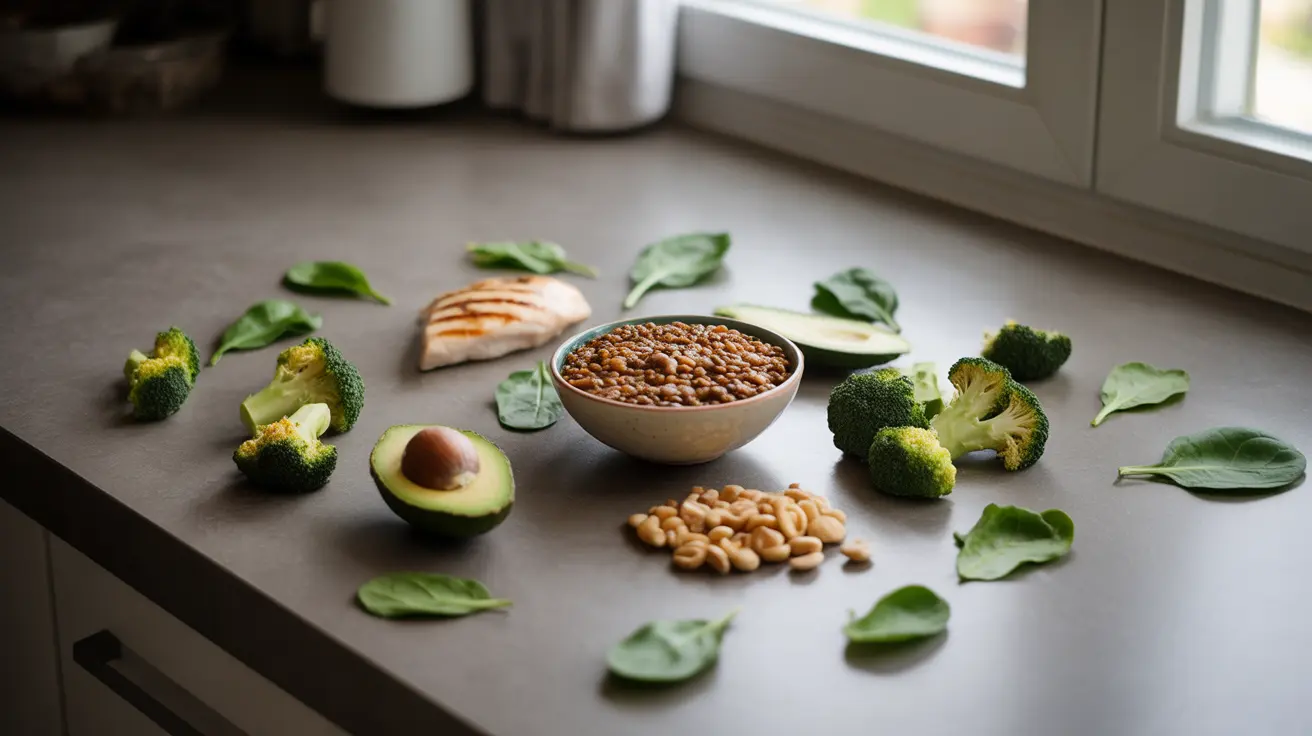Living with type 1 diabetes requires careful attention to diet and nutrition to maintain healthy blood sugar levels. While there's no one-size-fits-all approach, understanding the principles of a type 1 diabetes diet can help you make informed choices about your meals and successfully manage your condition.
In this comprehensive guide, we'll explore evidence-based strategies for meal planning, including carbohydrate counting, optimal macronutrient balance, and practical tips for maintaining stable blood glucose levels through diet.
Understanding the Basics of a Type 1 Diabetes Diet
A well-planned type 1 diabetes diet focuses on nutrient-rich foods while carefully monitoring carbohydrate intake. The goal is to maintain blood sugar levels within your target range while ensuring proper nutrition for overall health.
Foods to Include
Focus on incorporating these nutritious options into your meals:
- Non-starchy vegetables (leafy greens, broccoli, cauliflower)
- Lean proteins (chicken, fish, tofu)
- Healthy fats (avocados, nuts, olive oil)
- Complex carbohydrates (whole grains, legumes)
- High-fiber foods (beans, lentils, vegetables)
Foods to Limit or Avoid
Be mindful of foods that can cause rapid blood sugar spikes:
- Refined sugars and sweets
- Processed snack foods
- Sugar-sweetened beverages
- White bread and refined grains
- Fast food items high in saturated fats
Mastering Carbohydrate Counting
Carbohydrate counting is a crucial skill for managing type 1 diabetes. This method helps you match your insulin doses to your carbohydrate intake, leading to better blood sugar control.
Tips for Successful Carb Counting
Consider these practical strategies:
- Read nutrition labels carefully
- Use measuring tools initially to learn portion sizes
- Keep a food diary to track patterns
- Consider working with a registered dietitian
- Use smartphone apps designed for carb counting
The Optimal Macronutrient Balance
While individual needs vary, a general recommendation for macronutrient distribution in type 1 diabetes includes:
- 45-50% of calories from carbohydrates
- 20-30% of calories from protein
- 25-35% of calories from healthy fats
Meal Timing and Exercise Considerations
Coordinating meals with insulin and physical activity is essential for blood sugar management. Establish consistent meal times and learn to adjust your food intake based on your activity level.
Exercise and Food Timing
Consider these guidelines when planning meals around physical activity:
- Eat a balanced meal 2-3 hours before exercise
- Keep fast-acting carbohydrates handy during workouts
- Monitor blood sugar before, during, and after exercise
- Adjust meal timing based on activity intensity
The Diabetes Plate Method
The Diabetes Plate Method offers a simple visual approach to meal planning:
- Fill half your plate with non-starchy vegetables
- Quarter of the plate with lean protein
- Quarter of the plate with complex carbohydrates
- Add a small portion of healthy fats
- Include a serving of dairy or calcium-rich alternative
Frequently Asked Questions
What foods should I include and avoid in a type 1 diabetes diet to manage blood sugar effectively?
Include lean proteins, non-starchy vegetables, complex carbohydrates, and healthy fats. Avoid or limit refined sugars, processed snacks, sugary beverages, and foods high in saturated fats. Focus on whole, unprocessed foods that won't cause rapid blood sugar spikes.
How can carbohydrate counting help with insulin management in type 1 diabetes?
Carbohydrate counting allows you to match your insulin doses to your carb intake more accurately. This precision helps prevent blood sugar fluctuations and enables better overall diabetes management. It gives you more flexibility in food choices while maintaining good control.
What is the recommended balance of macronutrients for someone with type 1 diabetes?
The general recommendation is 45-50% carbohydrates, 20-30% protein, and 25-35% healthy fats. However, these ratios may be adjusted based on individual needs, activity levels, and medical guidance.
How does meal timing and physical activity affect diet planning for type 1 diabetes?
Consistent meal timing helps maintain stable blood sugar levels. Physical activity can lower blood glucose, so it's important to adjust meal timing and carbohydrate intake around exercise. Working with your healthcare team can help determine the best schedule for your lifestyle.
What is the Diabetes Plate Method and how can it be used to plan meals for type 1 diabetes?
The Diabetes Plate Method is a visual guide that suggests filling half your plate with non-starchy vegetables, a quarter with lean protein, and a quarter with complex carbohydrates. This method helps create balanced meals without requiring detailed carb counting and can be used alongside other management strategies.




